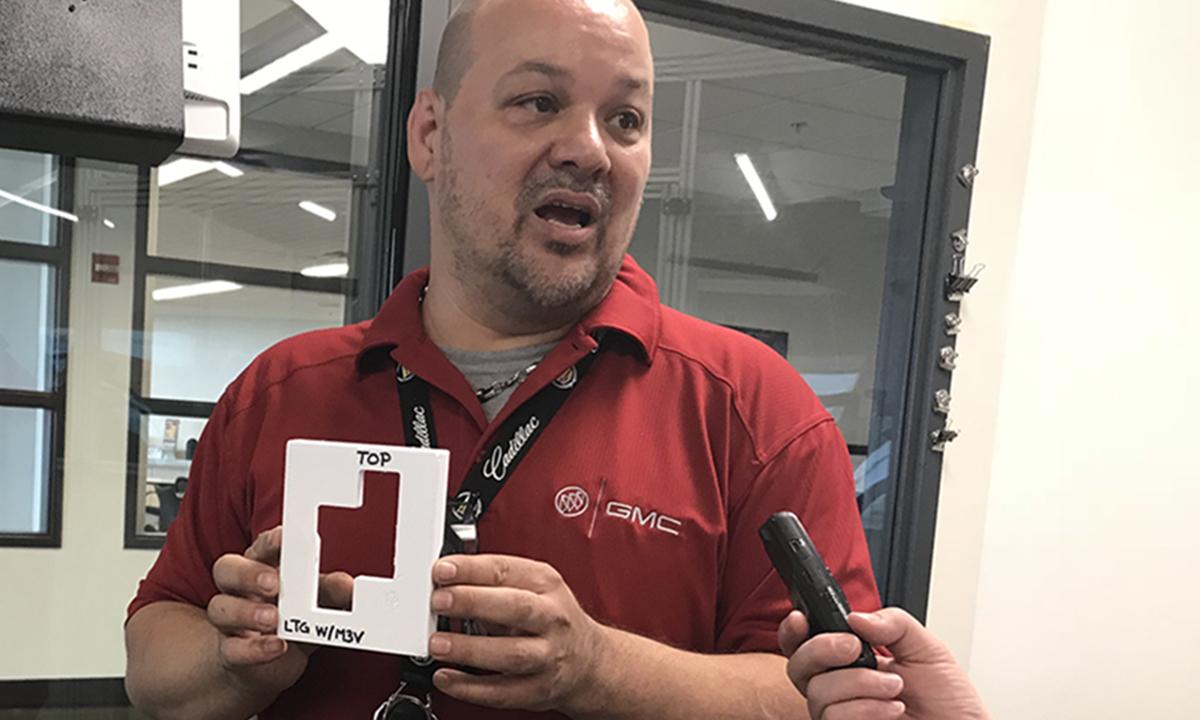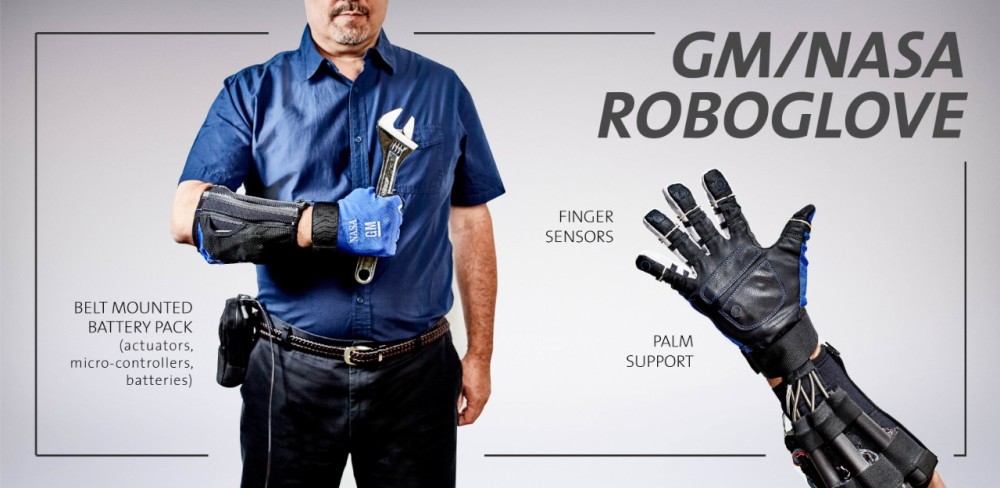At General Motors’ Lansing Delta Township Assembly Plant, Michigan, workers may use a bionic glove, named Robo-Glove, to handle mass produced 3D printed parts.
Two years ago, GM initiated a project in collaboration with NASA and Bioservo to develop a grasp-assisted glove which could help increase workers’ productivity. Now, their engineers have successfully invented Robo-Glove, which allows wearers to work long hours, which may begin a new chapter in robot-human collaboration.

3D printing at GM
In the last three years, GM’s 3D printed parts has saved it $300,000. This saving is due to the efficiency of the entire process of 3D printing a part than outsourcing it. One example of such a part is a tool that is used for aligning engine and transmission VIN number. This tool, if produced by a vendor would cost $3000; but, 3D printed at GM’s Lansing Delta Township Assembly Plant costs less than $3.
Zane Meike, who man’s GM’s largest printer at the Michigan plant, explains that the entire process of printing a fully functional 3D part could take as few as three days. Designing a 3D part takes up to three hours, and the product is printed, completed, and ready to use within three days. The parts can range from minor tools to prototypes: “We’ve done many parts for many different applications, including production aids, ergo tools for operators, and prototypes”.
Human-robot collaboration
The Robo-Glove, invented in a collaboration between GM, NASA, and Bioservo, is a wearable grasp-assist device that helps workers by providing extra muscular strength. This can decrease the stress on the tendons of the hand, hence, reducing strain on fingers and wrist during long working hours. It could also increase productivity and ensure that workers’ hands are not overused, in effect, ensuring long term health of workers who do laborious and repetitive manual tasks.

Currently, Robo-Glove is produced as Ironhand® by Bioservo Technologies. It uses SEM™ (Soft Extra Muscle) technology and includes a belly-mounted battery pack and controllers, an adjuster button and peripheral sensors.
At various GM’s assembly plants the Robo-Glove is in trial alongside the company’s 3D printing directive as a potential future innovation. Interestingly, the Robo-Glove project could open new avenues for Robot-Human collaboration, placing mechanical assistance directly at the hands of the workforce.
GM is now ready to begin a pilot program which will test the capability and usability of Robo-Glove. Minor trials are already taking place, as Marty Linn, GM’s Principle Robotics Engineer explains: “We’ve already had multi-day trials at different powertrain and assembly plants, but we’ll do this pilot program for at least four months”. In future, it is very possible that Robo-Glove will assist workers in producing and handling 3D printed tool and parts.
For all the latest 3D printing news, subscribe to the 3D Printing Industry newsletter. Also, follow us on Twitter, and like us on Facebook.
Make your next additive manufacturing career move or hire new talent. Search and post 3D Printing Jobs on our free jobs service.
Featured image shows Robo-Glove, courtesy of General Motors via GM Corporate Newsroom.

